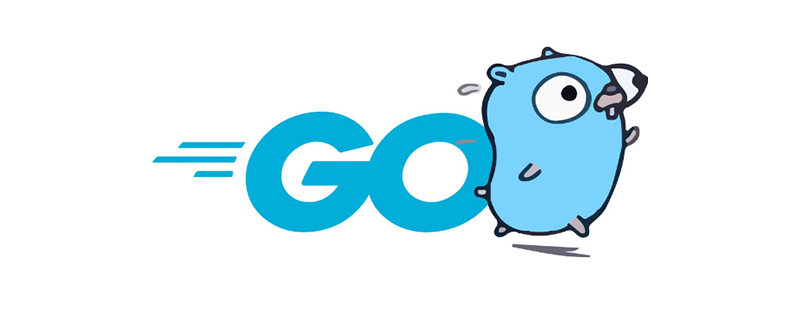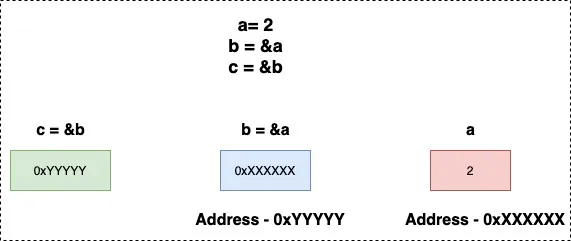 Backend Development
Backend Development Golang
Golang Golang generic function interpretation: a new trend in programming language development
Golang generic function interpretation: a new trend in programming language development
Over the past few decades, computer programming languages have continued to evolve and develop. In order to meet the increasingly complex software development needs, designers of programming languages continue to explore new functions and features. Among them, generics is a feature that has attracted much attention, which can help programmers define and use data structures and algorithms more flexibly. In this article, we will introduce the newly introduced generics feature in Golang, explore its impact on the development of programming languages, and provide some specific code examples to help readers better understand.
Golang (or Go) is an open source programming language developed by Google that has gained widespread adoption and recognition since its release. However, Golang’s initial lack of generic functionality made it difficult to implement some complex algorithms and data structures. In order to solve this problem, the designers of Golang decided to introduce generics functionality in the latest version to improve the expressiveness and flexibility of the language.
Generics is a programming paradigm that allows programmers to write generic code without hard-coding specific data types. Generics allow programmers to define an algorithm or data structure so that it applies not only to a specific data type but to any type. This flexibility makes code easier to reuse, reducing redundancy and complexity.
In Golang, the introduction of generic functions will greatly change the way programmers work. In the past, if we wanted to write a general sorting function, we might need to write multiple overloaded versions for different data types. Now, with the help of generics, we can write a general sort function that can accept slices of any data type and sort them. Here is a simple sample code:
package main
import (
"fmt"
)
func sort[T any](arr []T) []T {
for i := range arr {
for j := i + 1; j < len(arr); j++ {
if arr[i] > arr[j] {
arr[i], arr[j] = arr[j], arr[i]
}
}
}
return arr
}
func main() {
intArr := []int{3, 1, 4, 1, 5, 9, 2, 6, 5, 3, 5}
sortedIntArr := sort(intArr)
fmt.Println(sortedIntArr)
strArr := []string{"apple", "orange", "banana", "pear"}
sortedStrArr := sort(strArr)
fmt.Println(sortedStrArr)
} In the above sample code, we have defined a generic function named sort, which accepts slices of any type and returns the sorted of slices. Through the keyword any, we tell the compiler that T is a generic type and can accept any data type. Then we sort the integer slices and string slices respectively and output the results.
Through the above example code, we can see the power of the generic function, which allows us to write more general and flexible code without having to write it repeatedly. By rationally using generic functions, programmers can complete their work more efficiently and improve the maintainability and reusability of code.
Overall, the generics feature in Golang is an important update that marks a new trend in the development of programming languages. As software development needs continue to grow and become more complex, generic functions will become a powerful tool for programmers, helping them better cope with challenges. In the future, we can expect more programming languages to introduce generic features to adapt to the rapidly changing programming environment.
Through the introduction and sample code in this article, I hope readers can have a deeper understanding of the generic functions in Golang and apply them in practice, thereby improving their programming abilities and efficiency. I hope that the generic function will become a powerful assistant on your programming journey, allowing you to cope with programming challenges more easily and create more elegant and efficient code.
The above is the detailed content of Golang generic function interpretation: a new trend in programming language development. For more information, please follow other related articles on the PHP Chinese website!
 聊聊Golang中的几种常用基本数据类型Jun 30, 2022 am 11:34 AM
聊聊Golang中的几种常用基本数据类型Jun 30, 2022 am 11:34 AM本篇文章带大家了解一下golang 的几种常用的基本数据类型,如整型,浮点型,字符,字符串,布尔型等,并介绍了一些常用的类型转换操作。
 聊聊Golang自带的HttpClient超时机制Nov 18, 2022 pm 08:25 PM
聊聊Golang自带的HttpClient超时机制Nov 18, 2022 pm 08:25 PM在写 Go 的过程中经常对比这两种语言的特性,踩了不少坑,也发现了不少有意思的地方,下面本篇就来聊聊 Go 自带的 HttpClient 的超时机制,希望对大家有所帮助。
 为速度而生:PHP 与Golang 的合体 —— RoadRunnerSep 23, 2022 pm 07:40 PM
为速度而生:PHP 与Golang 的合体 —— RoadRunnerSep 23, 2022 pm 07:40 PM发现 Go 不仅允许我们创建更大的应用程序,并且能够将性能提高多达 40 倍。 有了它,我们能够扩展使用 PHP 编写的现有产品,并通过结合两种语言的优势来改进它们。
 什么是golangNov 22, 2022 am 10:33 AM
什么是golangNov 22, 2022 am 10:33 AMgolang是一种静态强类型、编译型、并发型,并具有垃圾回收功能的编程语言;它可以在不损失应用程序性能的情况下极大的降低代码的复杂性,还可以发挥多核处理器同步多工的优点,并可解决面向对象程序设计的麻烦,并帮助程序设计师处理琐碎但重要的内存管理问题。
 谷歌与Golang关系逐渐疏远?分析行业趋势Mar 06, 2024 am 08:45 AM
谷歌与Golang关系逐渐疏远?分析行业趋势Mar 06, 2024 am 08:45 AM随着信息技术的快速发展和不断变革,各大科技公司都在不断调整自己的业务重心,以适应市场的需求和行业的趋势。谷歌和Golang之间的关系也在近年来出现了一些变化,一些迹象表明二者之间的联系正在逐渐疏远。接下来,我们将从几个方面对此现象进行分析。首先,Golang作为一种编程语言,在近年来逐渐崭露头角,受到越来越多开发者的青睐。Golang的简洁高效、并发性能强大


Hot AI Tools

Undresser.AI Undress
AI-powered app for creating realistic nude photos

AI Clothes Remover
Online AI tool for removing clothes from photos.

Undress AI Tool
Undress images for free

Clothoff.io
AI clothes remover

AI Hentai Generator
Generate AI Hentai for free.

Hot Article

Hot Tools

PhpStorm Mac version
The latest (2018.2.1) professional PHP integrated development tool

DVWA
Damn Vulnerable Web App (DVWA) is a PHP/MySQL web application that is very vulnerable. Its main goals are to be an aid for security professionals to test their skills and tools in a legal environment, to help web developers better understand the process of securing web applications, and to help teachers/students teach/learn in a classroom environment Web application security. The goal of DVWA is to practice some of the most common web vulnerabilities through a simple and straightforward interface, with varying degrees of difficulty. Please note that this software

SecLists
SecLists is the ultimate security tester's companion. It is a collection of various types of lists that are frequently used during security assessments, all in one place. SecLists helps make security testing more efficient and productive by conveniently providing all the lists a security tester might need. List types include usernames, passwords, URLs, fuzzing payloads, sensitive data patterns, web shells, and more. The tester can simply pull this repository onto a new test machine and he will have access to every type of list he needs.

Safe Exam Browser
Safe Exam Browser is a secure browser environment for taking online exams securely. This software turns any computer into a secure workstation. It controls access to any utility and prevents students from using unauthorized resources.

MinGW - Minimalist GNU for Windows
This project is in the process of being migrated to osdn.net/projects/mingw, you can continue to follow us there. MinGW: A native Windows port of the GNU Compiler Collection (GCC), freely distributable import libraries and header files for building native Windows applications; includes extensions to the MSVC runtime to support C99 functionality. All MinGW software can run on 64-bit Windows platforms.








